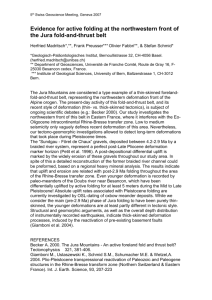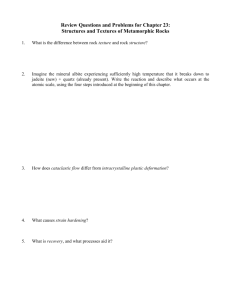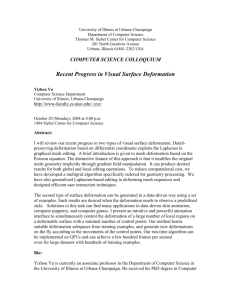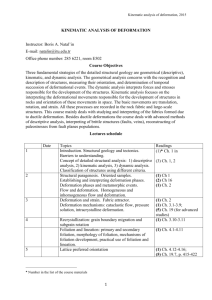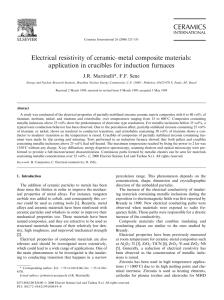NW Namibia
advertisement
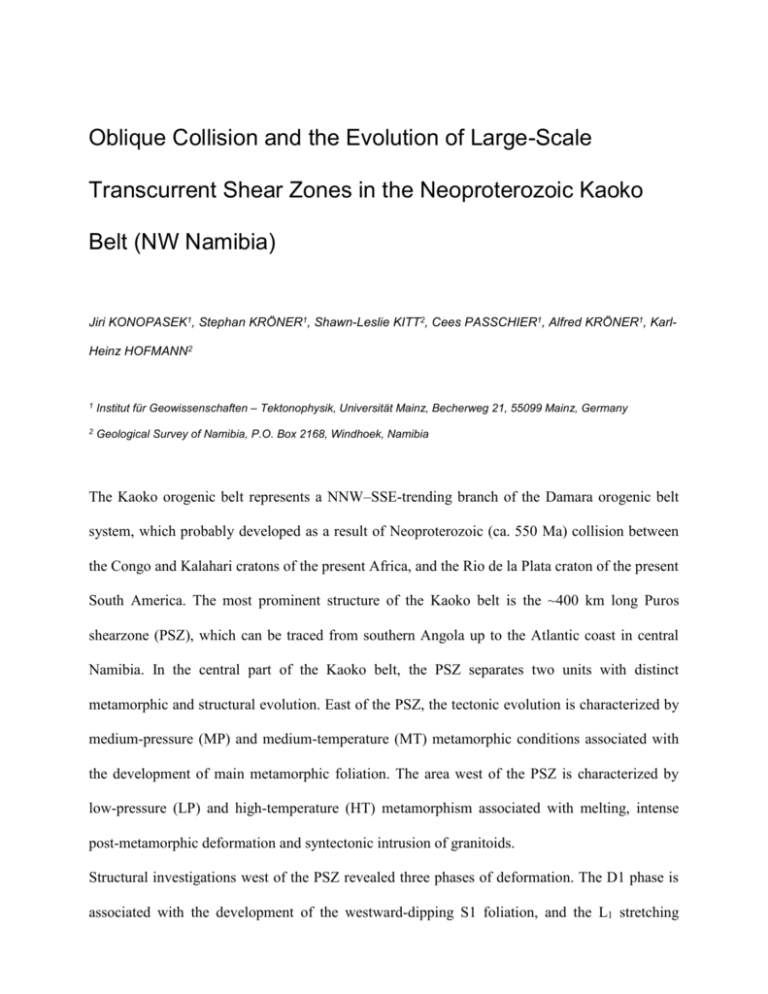
Oblique Collision and the Evolution of Large-Scale Transcurrent Shear Zones in the Neoproterozoic Kaoko Belt (NW Namibia) Jiri KONOPASEK1, Stephan KRÖNER1, Shawn-Leslie KITT2, Cees PASSCHIER1, Alfred KRÖNER1, KarlHeinz HOFMANN2 1 Institut für Geowissenschaften – Tektonophysik, Universität Mainz, Becherweg 21, 55099 Mainz, Germany 2 Geological Survey of Namibia, P.O. Box 2168, Windhoek, Namibia The Kaoko orogenic belt represents a NNW–SSE-trending branch of the Damara orogenic belt system, which probably developed as a result of Neoproterozoic (ca. 550 Ma) collision between the Congo and Kalahari cratons of the present Africa, and the Rio de la Plata craton of the present South America. The most prominent structure of the Kaoko belt is the ~400 km long Puros shearzone (PSZ), which can be traced from southern Angola up to the Atlantic coast in central Namibia. In the central part of the Kaoko belt, the PSZ separates two units with distinct metamorphic and structural evolution. East of the PSZ, the tectonic evolution is characterized by medium-pressure (MP) and medium-temperature (MT) metamorphic conditions associated with the development of main metamorphic foliation. The area west of the PSZ is characterized by low-pressure (LP) and high-temperature (HT) metamorphism associated with melting, intense post-metamorphic deformation and syntectonic intrusion of granitoids. Structural investigations west of the PSZ revealed three phases of deformation. The D1 phase is associated with the development of the westward-dipping S1 foliation, and the L1 stretching lineation plunging in the same direction. The S1 foliation was later refolded into km-scale F2 folds or completely reworked into NW–SE-striking, subvertical S2 foliation. The L2 stretching lineation is mostly subhorizontal, suggesting transpressional regime of deformation. Intrusion of the Amspoort-type granite seems to be coeval with the D2 deformation and its solid-state deformation (D3) indicates continuous deformation during decreasing temperature. As suggested by structural data, the early stage of tectonic evolution in the area is characterized by oblique northwestward underthrusting of the western margin of the Congo craton, resulting in its MP–MT metamorphism. On the other hand, slow oblique exhumation caused LP–HT metamorphism and partial melting of the upper plate, and resulted in its strong weakening. The development of a substantial rheological contrast prevented further underthrusting of the western margin of the Congo craton, and allowed the formation of the HT Puros shearzone as a result of localized transpressional deformation along the contact with the weak LP–HT unit. Intense deformation associated with transcurrent movement is observed in the whole LP–HT unit where the former flat-lying metamorphic foliation is almost completely reworked into subvertical fabric. This subvertical fabric was later intruded by syntectonic Amspoort-type intrusion. Late tectonic evolution of the area is characterized by localization of transpressional deformation in the Amspoort-type intrusion, probably during cooling of the whole orogenic belt. Intense lowtemperature deformation of the Amspoort granite and surrounding rocks suggests that this intrusion represented weak inhomogeneity which overtook the role of the PSZ in late stages of the evolution of the Kaoko belt. We suggest that differential movements along these first-order shearzones are responsible for the final pattern of the Kaoko orogenic belt.
